New perk! Get after it with local recommendations just for you. Discover nearby events, routes out your door, and hidden gems when you sign up for the Local Running Drop.
It’s the week before the week the Tokyo Olympics are slated to finally kick off—a year late, and with just a fraction of the fanfare originally planned. In some places the signs are there, literally. There’s an Olympic banner hanging from a lamppost outside this window as I’m writing from Tokyo’s Shibuya neighborhood, just walking distance from the Olympic Stadium.
All of the streets leading into the stadium neighborhood are barricaded. The gates around them are connected by smooth metal walls over ten feet high that form a perimeter, their white paint decked out here and there with the fashionably subdued tones of the Tokyo 2020 logo. At the main entrance near Gaienmae Station, international staff, media, and supply company workers arrive by the busload from their official accommodations—some lingering on the sidewalk as local students enter the high school next door before going through the security gate into the stadium zone. A few families take pictures of the five rings in the Olympic park across the street from the stadium.
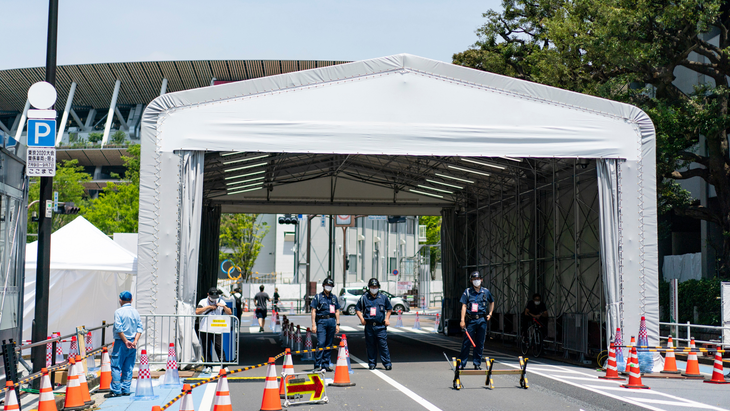
But Tokyo is a big city—a very big one—with a greater metropolitan area population that’s roughly the size of Poland’s, and its neighborhoods are hyper-compartmentalized. Unusually, you don’t have to go far from the stadium or any other Olympic venue to find absolutely no trace of anything that would say the world’s biggest sporting event is about to occur.
The atmosphere in the city reflects that. After a tumultuous lead-up that included opposition politician Yukio Edano calling in mid-June for IOC President Thomas Bach and other international VIPs to be barred from entering Japan, exit polling at the July 4 Tokyo metropolitan election showed a roughly even three-way split between residents 1. wanting the Olympics canceled or postponed again, 2. wanting them to go ahead with some level of spectator presence, and 3. wanting the Games to happen without fans in the stands. There simply wasn’t much of the large-scale opposition reported months ago—but also not much of the electricity you’d expect in a host city either.
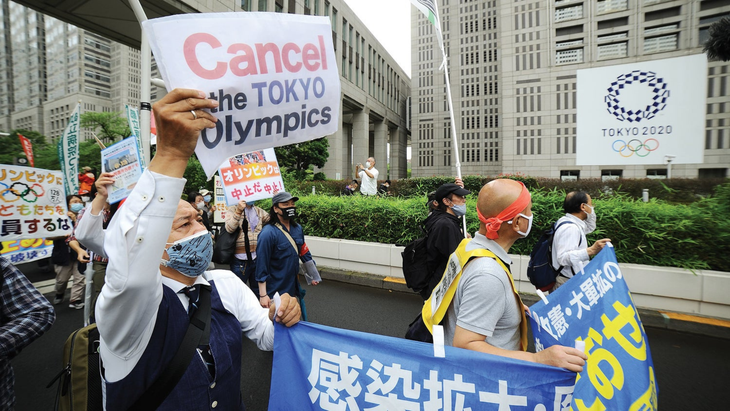
The results of a lottery to reduce Olympic ticket holders in order to meet COVID capacity caps were scheduled to be announced the morning of July 6, but on the afternoon of July 5 emails went out saying this would be pushed back five days. On July 8, IOC head Bach was quietly ushered into the country and just hours later came a one-two punch of announcements: one from the government that Tokyo would go back into a state of emergency for July 12-Aug. 22; and one from Tokyo 2020 organizers that fans wouldn’t be allowed into any Olympic events in the city.
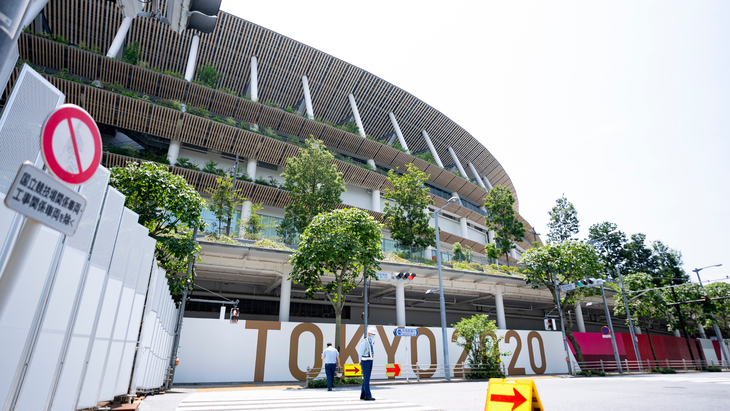
The last-minute decision meant that after eight years of anticipation, the average Tokyo resident lost any hope of a personal share in the Olympic experience. College student Elina Ohira had scored highly coveted tickets to several track finals in the Olympic Stadium. “I see the stadium from the train on the way to university,” she said. “I really wanted to see it from inside. It’s so disappointing.” Hiroshi Kazama runs the Aoyama Anzutei restaurant by Gaienmae Station right down the street from the stadium. “The whole area would’ve been full of people,” he said. “More than the loss of income this means for us, we’d been looking forward to the buzz of excitement they’d bring.”
Kazama stressed that colleagues who had invested in multilingual menus and language training for staff to handle inbound Olympic tourism would be losing more. Likewise for the new upscale places that had gentrified the neighborhood since Tokyo won the Olympic bid—although the higher rents they brought hurt his business too.
The hotel industry was also hurt. In 2019—a year before the original opening date—it was estimated that hotel rates could be four to five times normal during the Olympics, even with new hotels popping up across the city. Now that only a tiny fraction of the expected clientele will actually come, prices have cratered, along with businesses’ ability to recoup on investments. “Hotel rates in Tokyo and the area are even lower than usual,” said Satoshi Koshida, a travel agent at Yokohama’s Victory Tour.
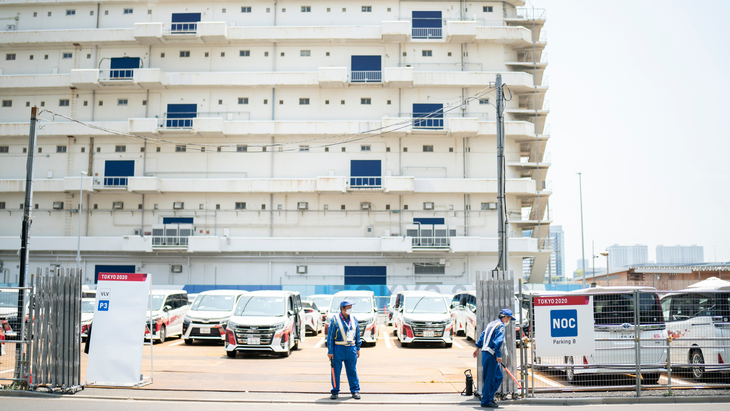
But the show goes on, and things have continued to move into the final preparation phase. Even before the Olympic Village officially opened on July 13, a few teams had claimed their spots, with Croatia leading the world in hoisting its colors. Athletes are only allowed to be in the Village for a limited number of days before and after their events, meaning fewer people there at any one time than at a regular Olympics.
Instead of white walls there is white mesh fencing, serving as much to keep athletes in as to keep intruders out. Athletes are not allowed to leave the Village, except on official transportation to event venues, so here too the atmosphere is quiet just a block or two away, and local businesses will receive none of the action they’d anticipated. The fencing shuts down one of the main bridges onto the island, and the security gate is on an even larger scale than at the Olympic Stadium.
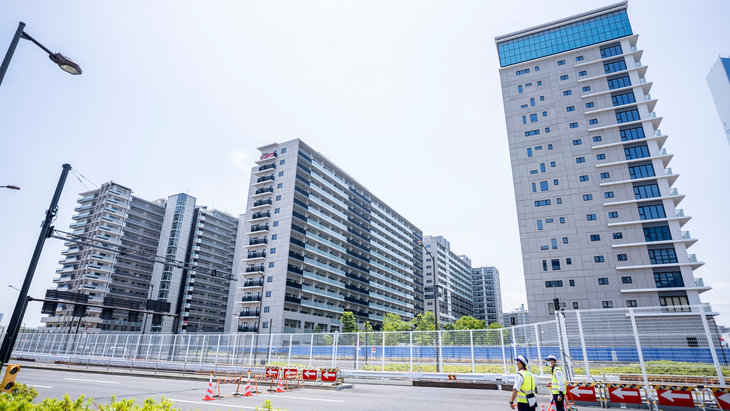
Exactly two weeks from the first day of triathlon competition, the main part of the triathlon venue, the swim, and the transition zones appear almost ready—the most notable feature still missing is the giant video screen to be installed on the frame facing stands that will remain empty. The whole thing is surrounded by the omnipresent white walls—over a mile of them—again sporting the soothing logo colors.
The good news is that water quality has improved since the 2019 test event, despite recent international reports to the contrary. A day after heavy rains there’s no trace of the sewer odors reported at the test event, but the water still looks a metallic brown, as diving cormorants instantly vanish in the murk.
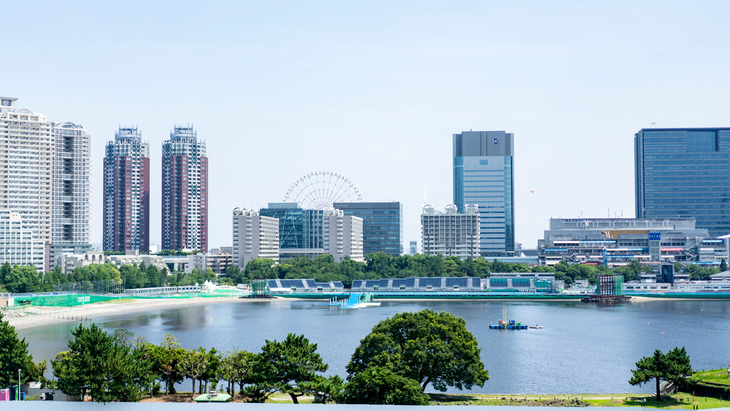
On the bike and run courses, signs notify locals of impending road closures. Tokyo 2020 organizers and local government in Sapporo, where the IOC unilaterally relocated the extremely popular Olympic marathons and race walks, have asked fans not to come watch those events in person. They plan to erect barriers and have staff on patrol asking people to go home. There hasn’t been the same kind of campaign for the triathlon, and two weeks out there’s no sign of fencing or barriers that would stop people from showing up.
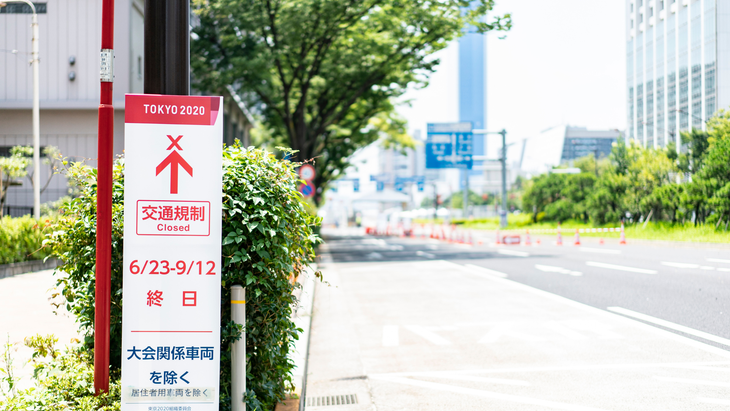
With all the fixed venues closed to the public and the road events happening far away, the triathlon, and especially its bike leg, might just be about the only chance residents of central Tokyo have to see Olympic athletes competing in the flesh. Whatever the data might say about the relative risk of COVID-19 transmission in outdoor environments, it’s safe to say that large crowds lining the course are an optic the IOC and local organizers don’t want to see. But for any residents of the host city who want to get the tiniest sliver of the Olympic experience, they might not have any other choice.
Stay up-to-date on all things Olympics with Triathlete’s Guide to the Tokyo Olympics.